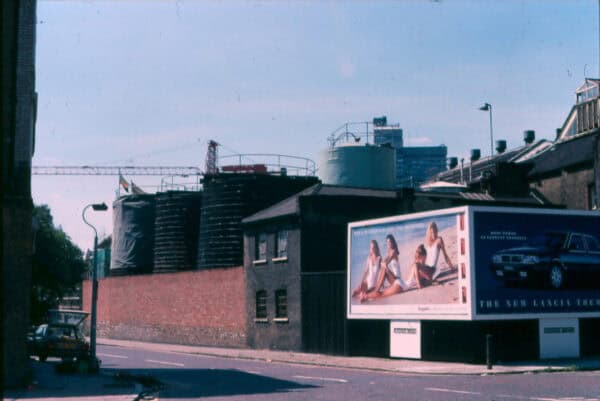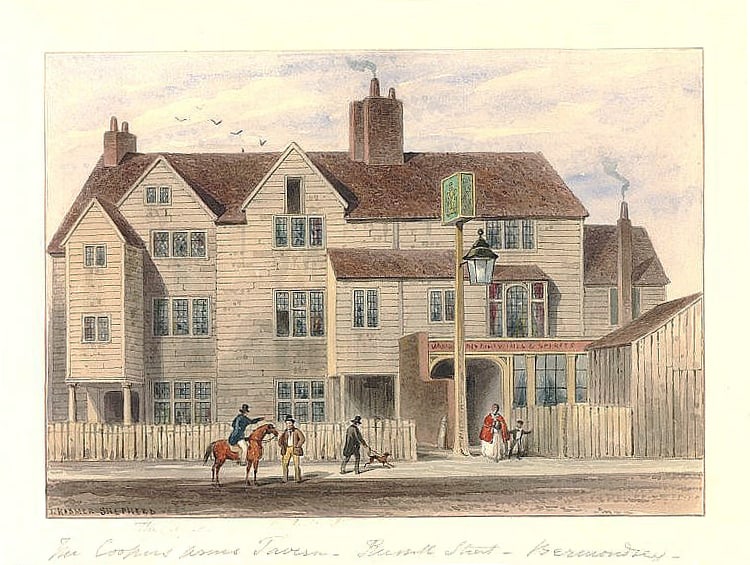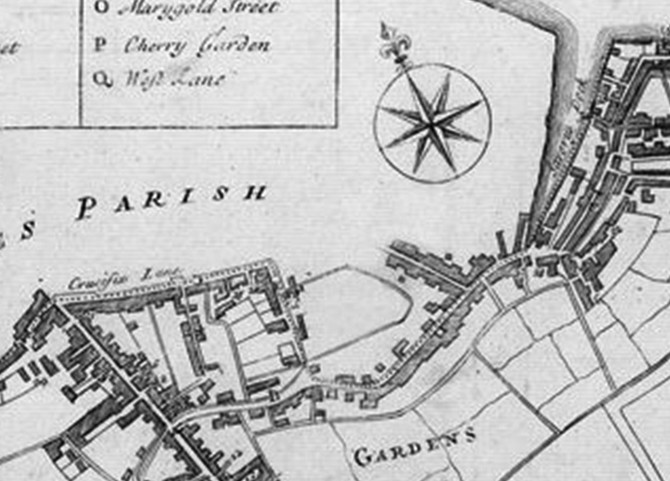In the summer of 2014, a couple of friends reminded me of my plan for a Charlie Chaplin statue at the Elephant, which I had first devised back in 1985. I hadn’t given the project much thought for many years, but their prompting triggered this short memoir, penned in January 2015.
I moved to the Elephant and Castle in 1985, and during this time, I was reading David Robinson’s biography of Charlie Chaplin, Chaplin, His Life And Art. I had been a long time fan of silent movies and had seen almost every Chaplin film released. My cinematic knowledge of this period extended to other comedians, including Buster Keaton, Harold Lloyd, Fatty Arbuckle, Ben Turpin, Laurel and Hardy and the Marx Brothers.
Chaplin said that he had been born in East Lane and we know he later lived in Kennington. His reference to East Street being East ‘Lane’ provides powerful evidence that he was a local, and his Mutual film ‘Easy Street‘ was a clear reference to his experiences in south London.
I found it ‘easy’ to connect with his story as this was the neighbourhood where I now lived. I bought my groceries at East Lane Market and from Safeway on the Walworth Road. I jogged regularly to keep fit, and my route took me down to the Oval Cricket Ground at Kennington and back. I drank at the Mansion House, Kennington Park Road and I was also a regular at the Cricketers at the Oval on a Sunday lunchtime.
Elephant and Castle was the connecting point between these two places, and I was amazed that Charlie Chaplin had almost no recognition in the area – except for the pub at the top of New Kent Road. Surely, given Chaplin’s contribution to early cinema and his worldwide fame, he deserved a permanent memorial or statue to acknowledge this?
In July 1985, I decided to work on an idea myself. I was no particular fan of the usual approach to memorials. Static bronze statues litter our capital, and these are often meaningless to the modern-day person. I wanted to create something which had a different dimension. Something which could honour Chaplin’s genius and his filmmaking but stand as a work of art in its own right. His 1931 work, City Lights, provided the inspiration for my project, and I developed an idea to recreate the opening scene.
A brilliant metaphor for Southwark in the 1980s
The film begins with the unveiling of a civic monument. All of the city’s dignitaries are present – pompous, self-important and full of self-grandiose. The visual shorthand shows us there is a pecking order and that everyone has their place. The Mayor, elected councillors and the police are elevated up high, while ordinary city folk are watching events from beyond. I felt that this served as a brilliant metaphor for the mess Southwark Council had created during the 1980s.
The monument is unveiled, revealing the tramp fast asleep – an outsider – and certainly not invited to this most important of civic celebrations. To him, the veiled monument was simply a dry place to spend the night, and as such, this was probably as good as life got for the little man. The Mayor, the police and the dignitaries are all aghast at such disrespect. Of course, the cinema audience, however, will have long adopted the little tramp character as their friend and would be interpreting proceedings with very different feelings.
Charlie Chaplin – City Lights (Clip) https://t.co/5EBjaUEIEZ via @YouTube
— Charlie Chaplin (@ChaplinOfficial) October 17, 2017
My plan was to create a civic monument for the Elephant, but with Chaplin – the tramp – placed in one of the various poses acted out in this section of the film. Maybe there could be more than one cast of Chaplin, which could be changed from time to time. Imagine driving up to the Elephant and not knowing what pose he’d be in?
Great idea, I thought, but my plan did have one failing. In my opinion, the civic monument created for City Lights is actually very ugly – probably deliberately so. An exact replica for permanent display at the Elephant might not be received too well, so the idea would need to include some new thinking – reworking the idea but perhaps using a modern sculpture instead.
The important thing seemed to me to capture the magic of Chaplin, rather than simply plonking an accurate life-sized bronze dressed in his tramp regalia. This had already been done in 1981 with John Doubleday’s Chaplin statue at Leicester Square. Very unimaginative and not really surprising that it was later relocated (dumped almost) in a nearby side street. Note: The statue found its way back into Leicester Square in 2016.
A Chaplin Statue for the 21st century?
I bumped into Simon Hughes at the Unveiling of The Shared at the Bermondsey Street Festival in September 2014. Simon mentioned that he was working with locals on a Chaplin statue at the Elephant. I was pleased to hear this and wished the project well.
Of course, I had every reason to be interested. In 1992, I revived my original plan, and Simon strongly supported the idea at the time. Before I knew it, the project received press coverage, and we were being interviewed together on Radio London. In reality, it was a great idea, but the timing was all wrong.
Chaplin was by no means a perfect human being, but his importance to early film history is unrivalled. He was a comic genius, writer, director and composer. His star shone brightly all over the globe, and it’s obvious that many of his ideas were drawn from his early experiences living in Walworth, Kennington and Lambeth. 40+ years after his death, the Elephant remains an excellent location for a Chaplin sculpture, and I hope that this current initiative gains support from every quarter.
Now that things really are at the point of changing at the Elephant, I certainly hope something comes of a new 21st-century plan.
Richard Miller: Jan 4 2015 (minor edit 2016)



